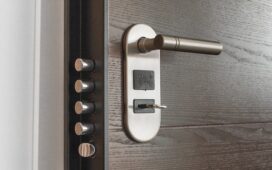DIY Car Care: Basic Maintenance Tasks Every Car Owner Should Know

If you’ve ever owned a car, then you know it’s not a simple machine. It requires regular maintenance in order to keep running smoothly. Unfortunately, many car owners neglect to do any of this work themselves, opting to take their cars to the mechanic instead. In this blog post, we will show you how to do some of the basic maintenance tasks on your own car so that you can save money and ensure that your vehicle runs smoothly. From oil changes to Tune-ups and everything in between, read on to learn all you need to know about DIY car care!
Checking the oil
Regularly checking the oil in your car is one of the most important maintenance tasks you can do. Not only will it help ensure your car runs smoothly, but it’s also a great way to check for any potential problems.
Here are four easy tips to check your oil:
1. Look at the level – The best way to check the oil level is to look at the dipstick. If there’s not enough oil on the dipstick, replace the filter and add more oil. If there’s too much oil, change the filter and reduce the amount of oil used.
2. Check for leaks – Another way to check for possible engine problems is by checking for leaks. Run your hands along all areas of the engine and exhaust system (especially around gaskets, bolts and hoses). Look for any traces of fluid or black smoke. If you find anything leaking, fix it right away!
3. Listen for noises – Finally, listen for noises from inside and outside of your car. If you hear knocking or grinding sounds, it might be a sign that there’s something wrong with your engine. You can also listen for strange noises coming from under the hood or around instrument panels
Checking tire pressure and air pressure
Basic maintenance tasks every car owner should know include checking tire pressure and air pressure. Checking your tire pressure each time you get a new set of tires is important to ensure the proper inflation level, which can prevent blowouts and save you money on repairs. Air pressure should also be checked regularly, especially if your vehicle is kept in a hot or cold climate. Over-inflating your tires can cause them to lose air and eventually fail, while underinflation can cause your ride to feel sluggish and unsafe. To check your tire pressures and air pressures, use one of the various online tools or a reliable garage tool kit.
Checking fluid levels
One of the most important things car owners can do to keep their vehicles running well is to check their fluid levels regularly and add fluid as needed. Checking fluid levels is an easy task that can help identify and avert problems early. Here are five tips for checking your car’s fluids:
1. Check your oil level. This is one of the most important tasks you should perform on a regular basis, and it’s also one of the easiest. Just remove the cap on the engine oil bottle or fill up your car’s tank, then wait 15 minutes for the level to settle. Look for a yellow or green line at the bottom of the container; if that line is above the “Max Capacity” line (usually around 3/4 full), then you need to add more oil. If there isn’t a Max Capacity line, then you probably don’t need to add any oil in order to maintain proper engine function – just enjoy your weekend cruising!
2. Check your battery cables and connections. Make sure they’re tight, clean and free of corrosion – this will help protect your battery from becoming corroded and unable to hold a charge. And make sure all your electrical connectors are firmly attached – it could be difficult to detect malfunctions if they occur while driving!
3. Check your air filter. Dirty filters can cause poor performance in engines, so it’s important to replace them on a regular schedule
Changing the brake pads
Your car’s brake pads are one of its most important systems. They need to be changed at least every 6 months, but preferably every 3-4 months in hot weather or when you see obvious wear and tear. You can do the entire job yourself, or call a mechanic to do it for you.
If your brakes make a grinding noise, they’re probably worn out. On older cars, the rotors may also need to be replaced as they become bald spots with metal shavings build up on them. When you change the pads, make sure to clean all dust and debris off the rotors and calipers using a shop vacuum before putting the new pads in place.
If your car has ABS (anti-lock braking system), have the system serviced by your dealer or mechanic annually as part of your regular maintenance schedule. If you have disc brakes, inspect them for signs of wear on a regular basis and replace them as needed using our guide below:
How often should I change my brake pads? A good rule of thumb is to replace brake pads every 6 months or 3-4 months in hot weather.
checking the car paint protection
There are a few easy things you can do to check the new car paint protection cost. Start by looking for any dents or scratches. If the paint is severely damaged, you’ll need to replace it. Next, look for any signs of oxidation or fading. If either of these problems exists, you need to take action and protect your car’s paintjob. Here are some easy tips to help keep your car’s paint in good condition:
1) Keep your car clean – One of the best ways to keep your car’s paint looking great is to keep it clean. Wash it regularly with a high-quality cleaning agent and a soft cloth. Don’t use harsh chemicals or abrasives, as this could damage the finish.
2) Use a protective coating – One simple way to protect your car’s finish is to use a protective coating. This can be applied through a spray system, using an applicator pad or even using an old T-shirt as a cloth sheltering the surface from the sun and elements. 3) Avoid harsh weather – Weather can be very harsh on cars, causing water spots and salt deposits that can damage the paintwork over time. Always try to drive in dry conditions and avoid taking long journeys in wet weather; instead, wait until things have dried out before driving your car. 4) Check for damages – Once every six months or so, take time to check for any damages that may have occurred since last being checked –
Changing the engine oil
One of the most basic and necessary car care tasks is changing your engine oil. And while it might not seem like a big deal, regularly changing your engine oil can help keep your car running smoothly and prevent costly repairs down the line. Here are five tips for ensuring you change your engine oil every 3,000 miles:
1. Make a schedule . Planning ahead will help you stay on track when it comes to changing your engine oil. Figure out when you typically do other routine maintenance tasks like tune-ups and tire rotations, and use that same timeframe for changes to your engine oil.
2. Use the right type of oil . Your vehicle’s manufacturer provides specific guidelines for which type of oil to use in your engine. Using an incorrect type of oil can damage your car’s components, so be sure to follow their recommendation.
3. Check the manufacturer’s recommended interval . Many automakers now recommend a more frequent interval betweenoil changes — usually at 3,000 miles or every 6 months — based on new research that suggests longer-term use of synthetic oils results in decreased wear and tear on engines over time. However, if you have a particularly large or powerful car, or live in an areas with severe winter weather conditions, consult with your mechanic about whether you need to change your engine oil more often than normal.
4. Use a quality motor filter . Just like changing the air filter in your house can improve air quality and save money on gas bills,
Adjusting the car’s suspension
There are a few basic maintenance tasks that should be carried out on a car on a regular basis. Adjusting the car’s suspension is one of them. This will ensure that the car rides smoothly and does not produce any jarring or creaks.
1. Check the tension of the suspension springs and shocks.
2. Adjust the height and alignment of the front and rear suspension components as needed.
3. Oil and grease the moving parts of the suspension system at least once every month or so to keep them running smoothly.













